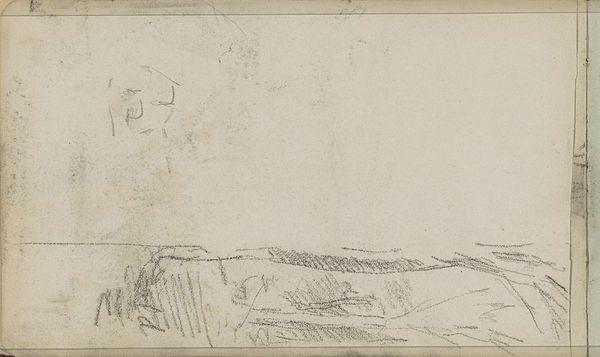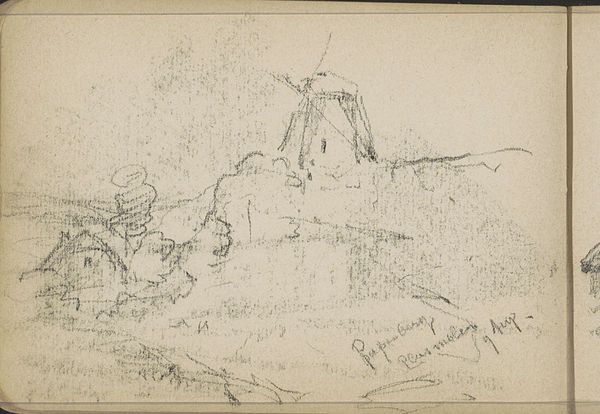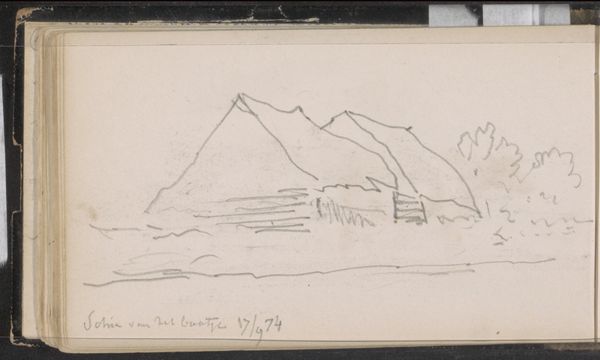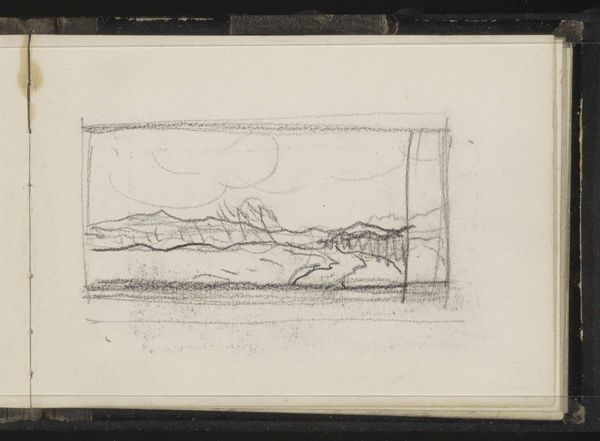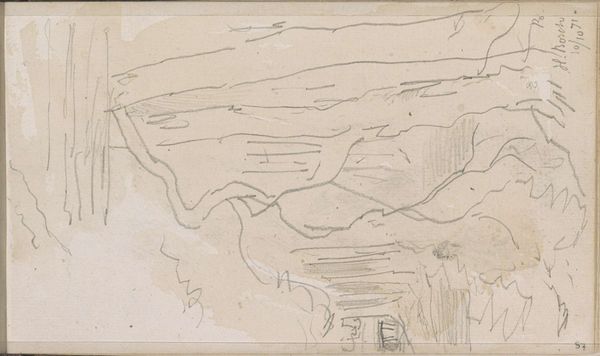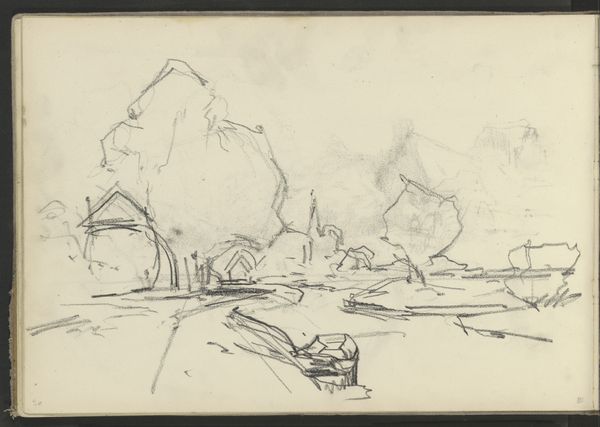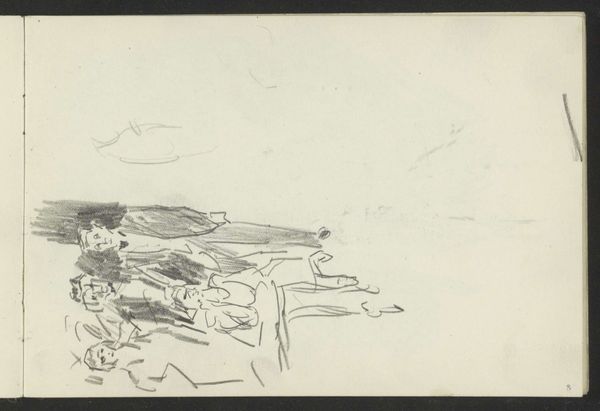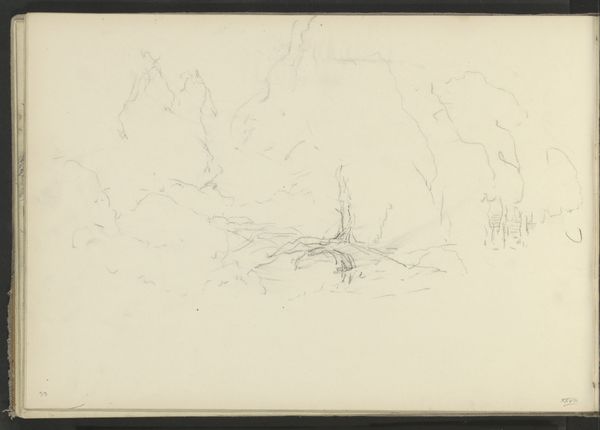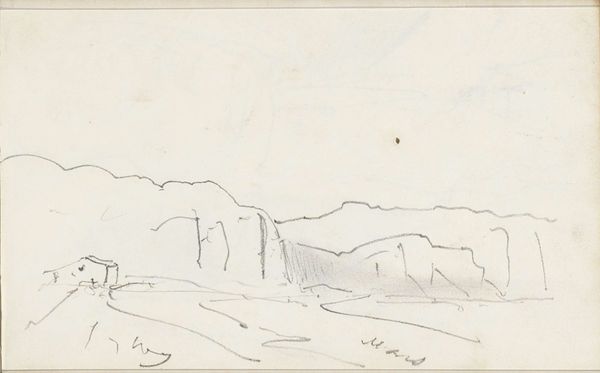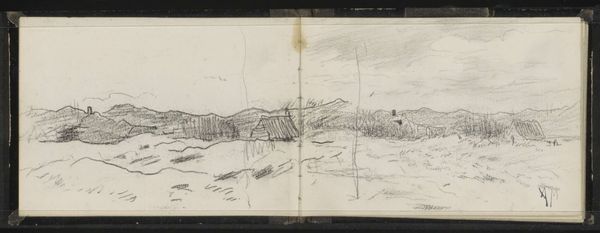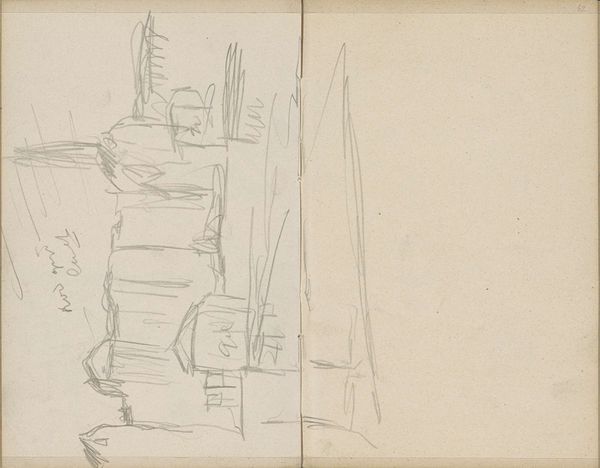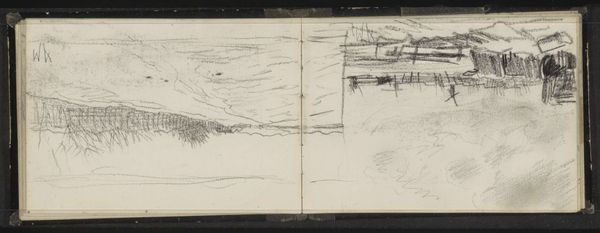
drawing, pencil
#
drawing
#
quirky sketch
#
impressionism
#
sketch book
#
incomplete sketchy
#
landscape
#
personal sketchbook
#
idea generation sketch
#
sketchwork
#
pen-ink sketch
#
pencil
#
sketchbook drawing
#
sketchbook art
#
realism
#
initial sketch
Copyright: Rijks Museum: Open Domain
Curator: Let’s turn our attention to this drawing, "Huis in een heuvellandschap," or "House in a Hilly Landscape," by Anton Mauve. It was likely created between 1848 and 1888 and is now housed in the Rijksmuseum. Editor: Immediately, I'm struck by the immediacy of the lines. It feels like a fleeting impression, almost captured mid-thought. The tonal range, or lack thereof, lends the whole piece an air of transient quietude. Curator: Mauve’s work sits interestingly within the context of Dutch landscape art and his ties to the Hague School, reflecting a movement away from idealized landscapes toward more realistic and intimate portrayals of rural life and landscapes. These kinds of images became symbols of Dutch identity and tradition during a time of rapid social change. Editor: Precisely. Consider how the structural composition – that stark, rudimentary dwelling centered against the gentle slope -- dictates how our eyes navigate the scene. The lines themselves appear hastily laid, yet they create a space and depth which feels... authentic. Curator: It is fascinating to see how Mauve uses a simple medium like pencil and perhaps some ink to portray what for city dwellers represented simplicity. But, of course, rural life held its own complexities, which were becoming increasingly visible and problematic during the time. Mauve came to represent rural realities, class, and labor within his body of work. Editor: But even divested of any sociological underpinnings, we can admire its masterful strokes and minimalist presentation. The way he suggested shape through shadow, the way line and negative space interplay... the house, the hills--mere suggestions rendered complete by artistic economy. Curator: Absolutely. Mauve provides an image that speaks to us about Dutch identity while quietly inviting us to investigate our own relationships to ideas of "home" and place within broader national narratives. The roughness also offers insights into the process of creation, presenting the unedited labor and journey of idea to the viewer. Editor: It does inspire reflection. The piece, regardless of the artist's intentions, functions beyond mere reportage. Its strength resides not in meticulous detail but in emotional resonance – a quiet reflection on home that still stands to us now.
Comments
No comments
Be the first to comment and join the conversation on the ultimate creative platform.
